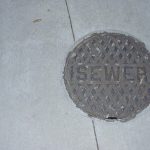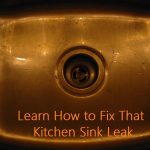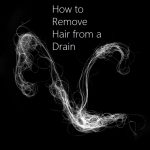Water damage can be pervasive and affect many homes and businesses, causing great financial loss and health risks. Whether it be from a flooding storm, a pipe bursting in winter, or a slow leak that has been on for months, water intrusion may cause devastating destruction to structures and personal belongings. In order to quickly and effectively respond to water damage and minimize the risks, it is important to understand what water damage entails.
What is Water Damage?
Water damage refers to the destructive effects resulting from intruded water into areas that can cause property damage and personal health issues. In most cases, water damage occurs due to disasters such as floods, plumbing failures, malfunctioning appliances, and even human errors, such as forgetting to turn off a tap. Note that water damage affects both residential and commercial real estate. Its results may be instant or progressive. For instance, instantaneous flooding might cause immediate destruction; on the other hand, a slow leakage might not be noticeable for months, and it would then be characterized by large-scale destruction and mold growth. The kind of damage and the category it falls into determine how best to respond to and restore the situation.
Types of Water Damage
There are basically three types of water damage: clean water damage, greywater damage, and black water damage. Each of the types has its own characteristics, challenges, and required response. Here is a brief of each.
Clean Water Damage (Category I)
Category I water is clean water that comes from relatively pure sources, such as drinking water coming out of a tap, from a leaking appliance, melting snow or ice, rainwater, or a broken pipe containing fresh water. Although clean water damage is much less harmful compared to grey or black water damage, clean water could become contaminated if untreated. Over time, clean water can become grey water, which provides for bacterial multiplication due to the inclusion of dirt, particles, and contaminants from the specific environment that it has invaded. Untended clean water damage can eventually progress to black water damage subjected to prolonged access to environmental pollutants, pathogens, or toxins. In this sense, urgency remains a key aspect even though clean water damage poses minimum danger.
The first steps involved in the attendance to a clean water damage situation are usually:
- Identification of the source and then rectification
- Drying and full extraction from residual water
- Drying, ventilating, and dehumidifying of impacted locations and resources
- Biocides applied to prevent future mold growth
Grey Water Damage (Category II)
Grey water, classified under Category II, contains a low level of active bacterial and/or chemical matter that cannot cause illness or injury if exposed to the body. The most common sources are effluent from laundry machines and dishwashers, bathroom overflow without solid matter, aquarium fluid spills, punctured water beds, and reverse osmosis systems gone wrong. Grey water contains potential factors that may harbor infectious agents, cleaning products, dissolved organic matter, and soapy residues, which would require careful management and handling.
The damage due to gray water may be restored by:
- Wearing proper PPE
- Containing non-affected areas from the contaminated areas
- Physical separation and disposal of items that are severely contaminated and cannot be recovered
- Implementation of aggressive cleaning and sanitizing protocols using hospital-grade disinfectants
- Implementation of HEPA air filtration to remove particulate airborne contaminants
Black Water Damage (Category III)
Known as Category III water damage, black water is heavily contaminated fluid with a high disease potential. Coming from backup of sewage, marine discharge, ground surface water, and rising rivers, the black water contains hazardous substances in large amounts, including parasites, viruses, bacteria, traces of heavy metals, endotoxins, exotoxins, and mycotoxins. Due to health issues, black water damage must be dealt with professionally, with specialized personal protective equipment.
Black water damage remediation management includes the following:
- Establishing containment by sealing doorways using plastic sheeting and duct tape
- Unsanitary content, building material, and furniture removal
- Harsh cleaning method usage that includes alkaline or acid-type degreasers
- Application of multi-step sanitizing treatments using pressurized foggers, ultraviolet light exposure
- Verifying final clearance after remediation by third-party testing companies
What is Water Damage Restoration?
Water damage restoration is the process of getting back a property to its original form before the damage. This complete procedure comprises a chain of steps like assessment, elimination of water, drying, cleaning, and repair of the influenced areas. Restoration is not only a process of water removal, it still consists of preventing further damage and assuring some safety measures for occupants as well. For the best results, consider hiring the right water damage restoration company. Usually, the professional restoration services generally follow a structured methodology that involves the following steps:
Counter strategy and planning
A really good counterstrategy and plan should be in place before starting restorative work. It means project scope, hazard recognition, realistic goal setting in terms of timeline expectation. Provided that a properly tailored action plan has been created for your unique situation and needs, be assured that all points of restoration will be covered in a prompt and effective manner. Proper planning will also avoid most of the inconveniences to daily life and reduce the overall costs associated with restorations.
Assessment and Evaluation
A complete inspection and assessment of the affected area is the first, most valuable, and essential process in restoring water damage. With the help of specialized equipment like moisture meters, infrared cameras, and hygrometers, professional technicians can run after moisture hidden pockets, growth of molds, and measure the humidity settings. They quote and classify the water damage according to industry rules as Clean Water (Category I), Grey Water (Category II), and Black Water (Category III). These are quite different from each other in terms of the decontamination process, stipulated procedures to be followed, and future risks.
Mitigation
When assessment has been done, mitigation work is started. The most crucial thing that should be considered in this step of mitigation is the stoppage of further damage from taking place, extraction as much water as possible. Fast response time has a dramatic effect on how much additional damage will occur to the structure; it reduces long-term restoration costs by minimizing the extent of needed repairs. Critical mitigation activities involve:
Stopping water flow: Professionals will find and stop any source of water if the leakage source is not identified or has not been stopped. Common sources include pipe leakage, malfunctioning appliances, and natural disasters.
Water Extraction: Experts extract the standing water on the floor, carpets, and other surfaces using strong industrial vacuum extractors and pumps. Fast removal of water prevents microbial proliferation and structural deterioration.
Drying and Dehumidification: After the water extraction, wet materials are dried with high-velocity air movers, commercial-grade fans, and dehumidifiers. These tools are utilized to get rid of the remaining moisture that could be found in walls, ceilings, and flooring.
Remediation
After remediation, the property is restored to a safe condition through the following steps:
Cleaning and Sanitization: Professionals make sure all the affected areas are cleaned and disinfected to be left free from dangerous pathogens. Attention should be placed more on absorbent materials that maintain moisture in their pores. Usually, these areas play hosts to harmful microbial agents if not treated well.
Drying and Deodorizing: The area is re-dried following the cleanup in order to make sure that all of the remaining moisture is gotten rid of. Special tools that help eliminate any remaining odors caused by water damage include air scrubbers and ozone generators.
Sanitizing and Mold Prevention: It prevents the continuation of mold, by using EPA-registered antimicrobial products designed for application on water damage restoration projects. They can effectively go deep into where a typical fungal growth would go, providing long-term resistance to fungal colonization.
Monitoring and Quality Control
Good restoration companies, as part of their excellent service commitment, carry out an inspection at various stages of the restoration process. Monitoring the progress by continuous follow-up and making quality checks ensures set goals have been achieved, proper techniques have been applied, and adequate dryness has been achieved. This rigid adherence to industry standards will ensure the best results and satisfied customers.
Insurance Claim Documentation
Lastly, one should keep documentation of everything down the line in the process of water damage restoration. Thorough documentation allows one to file insurance claims with accuracy, make a claim for reclamation of money, and act as evidence in case of disagreements about the coverage limit or policy requirement. The other importance of detailed documentation is that the parties are able to track progress over time, thus proving that the client abides by the agreed-on principal terms and conditions.
The Bottom Line
In summary, water damage restoration involves a long process that, when done right, helps solve the undesirable effects of water intrusion. From on-site inspection to the final stages of restorations, experts apply tested techniques and modern technologies to return homes and businesses to safety at the fastest time possible. Therefore, it’s worth your time and money to contact the best restoration companies committed to top-rated service and unparalleled expertise.





